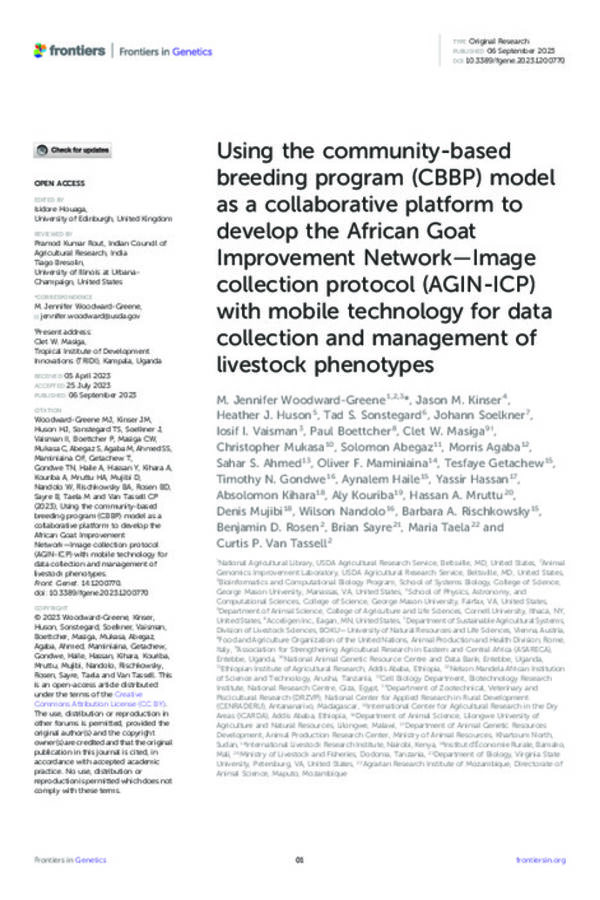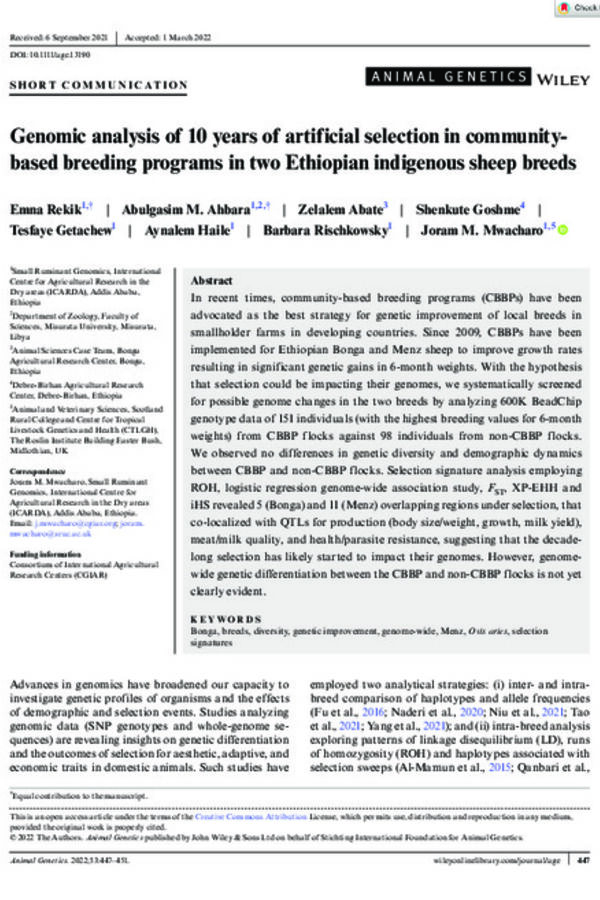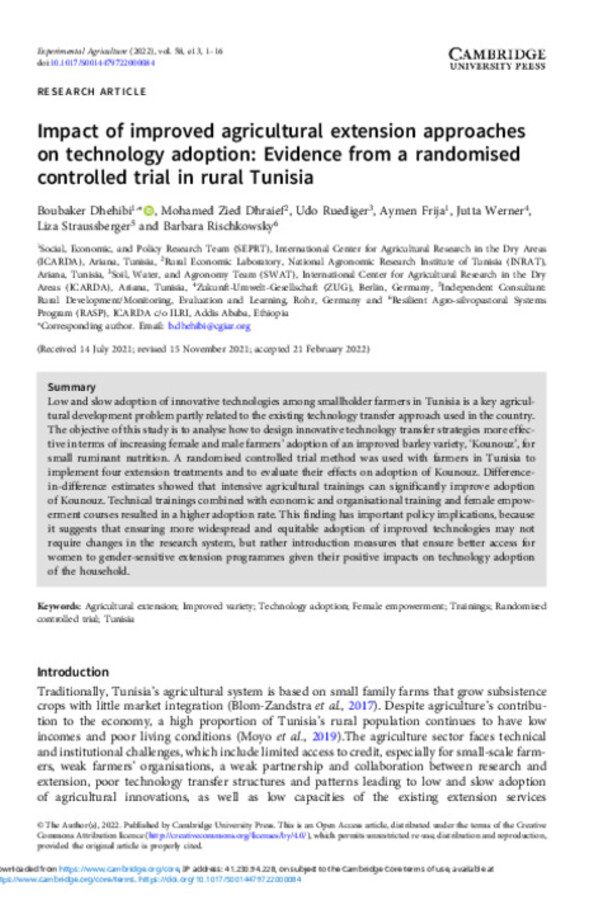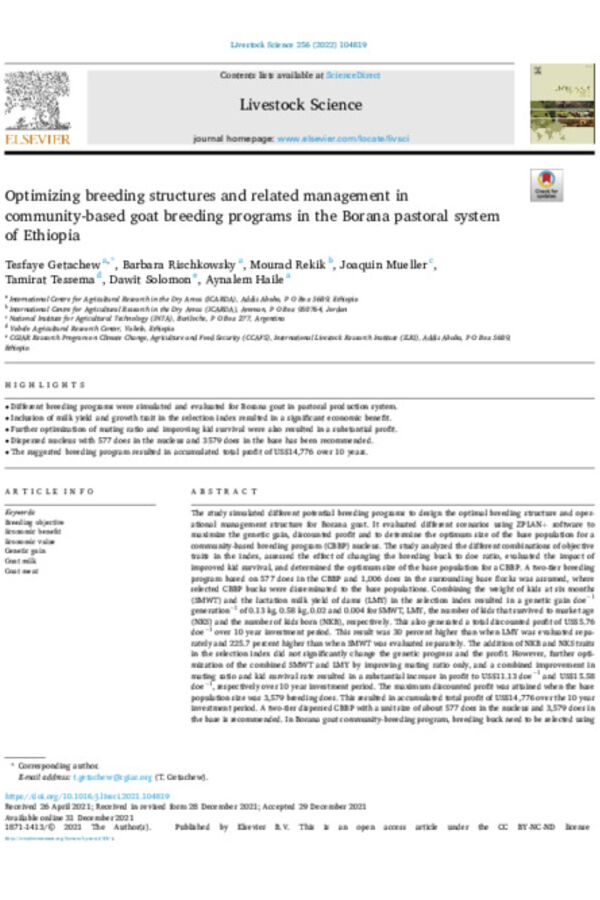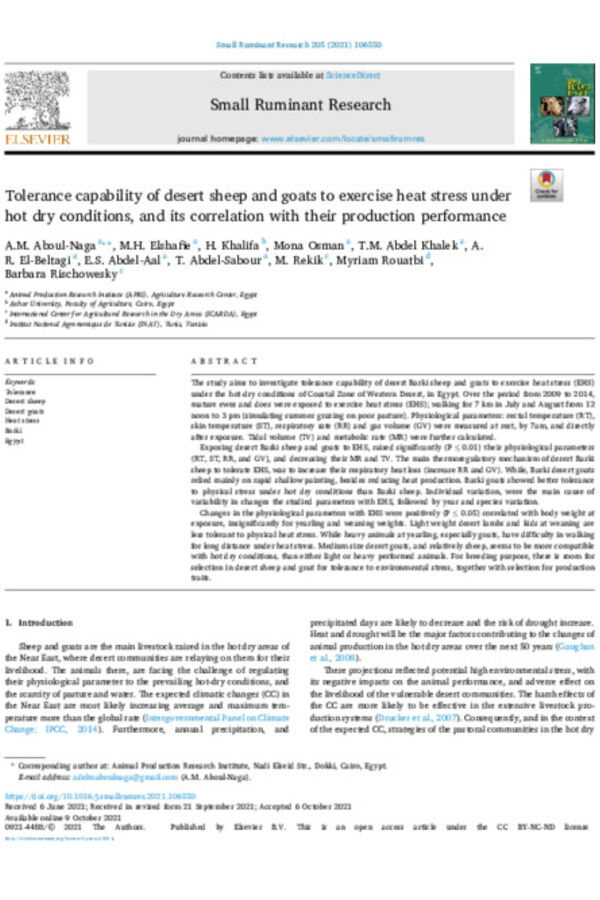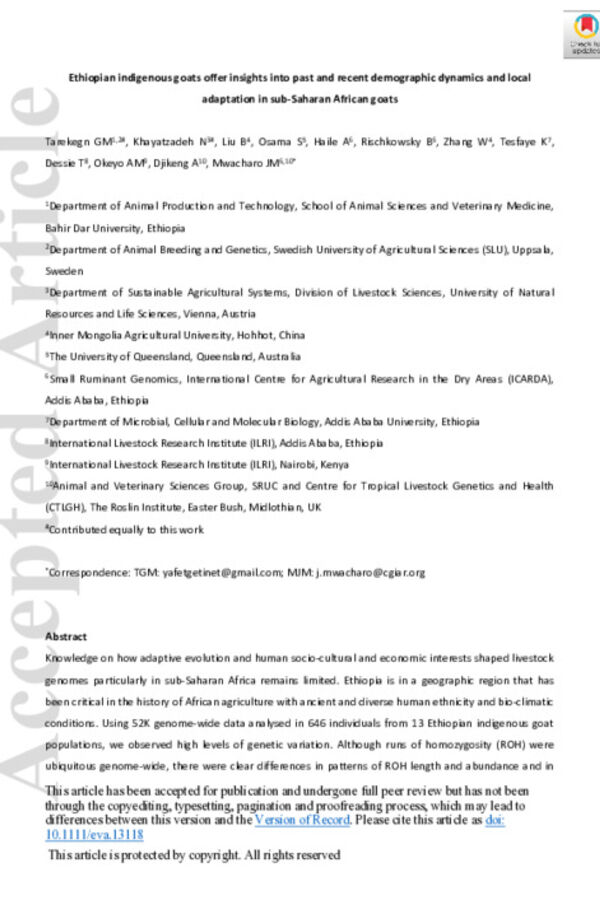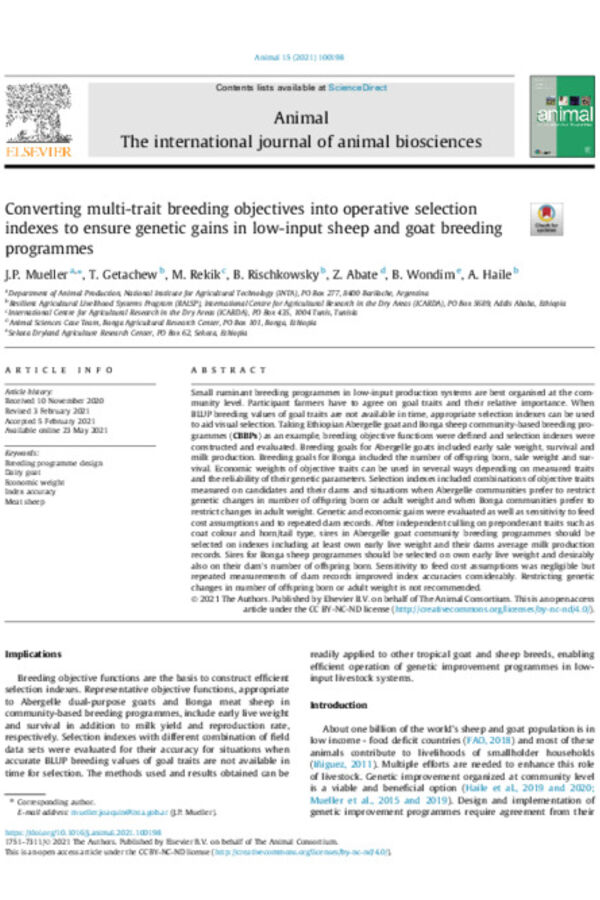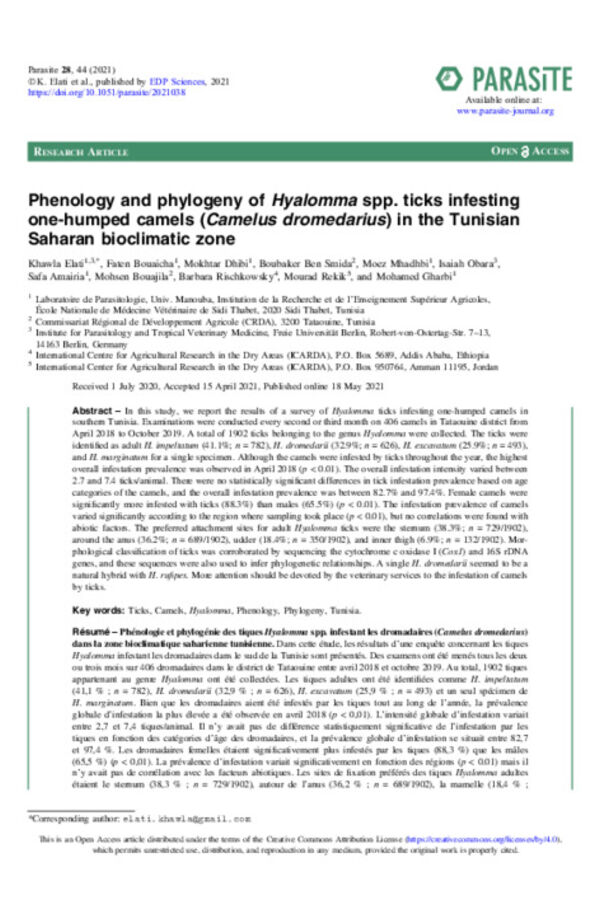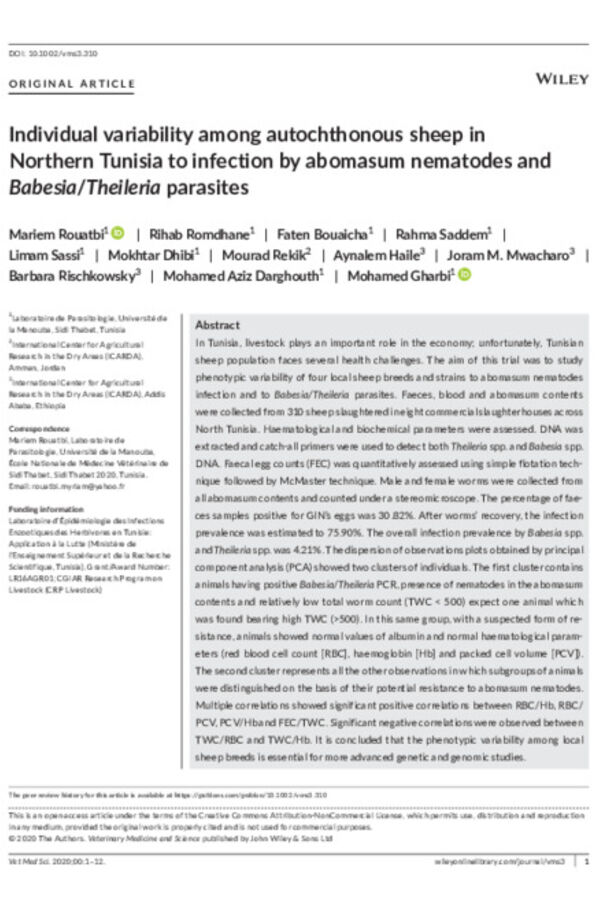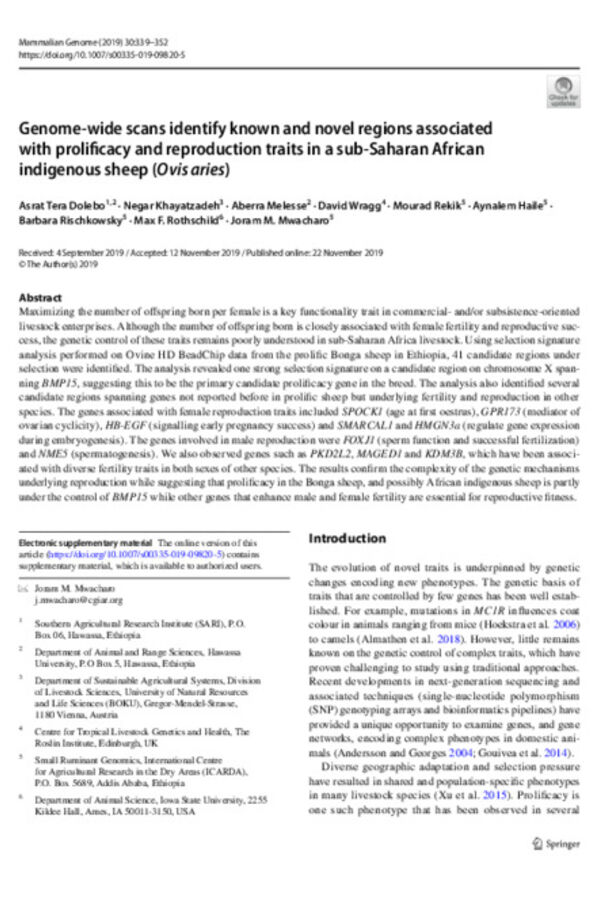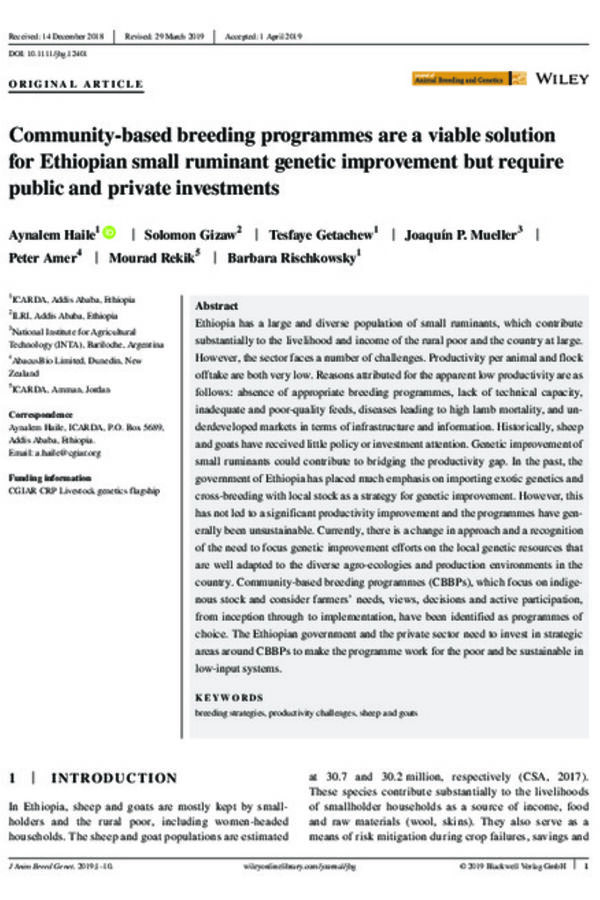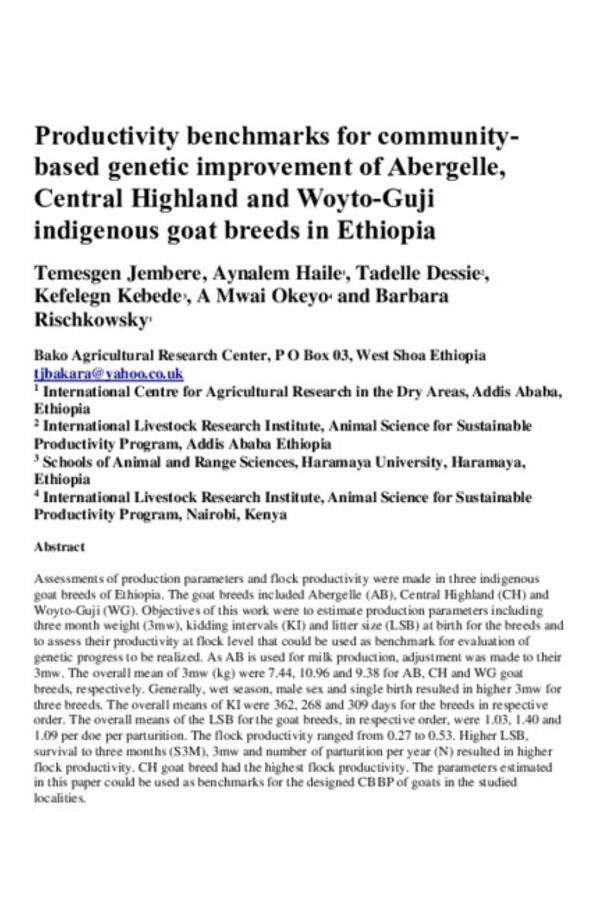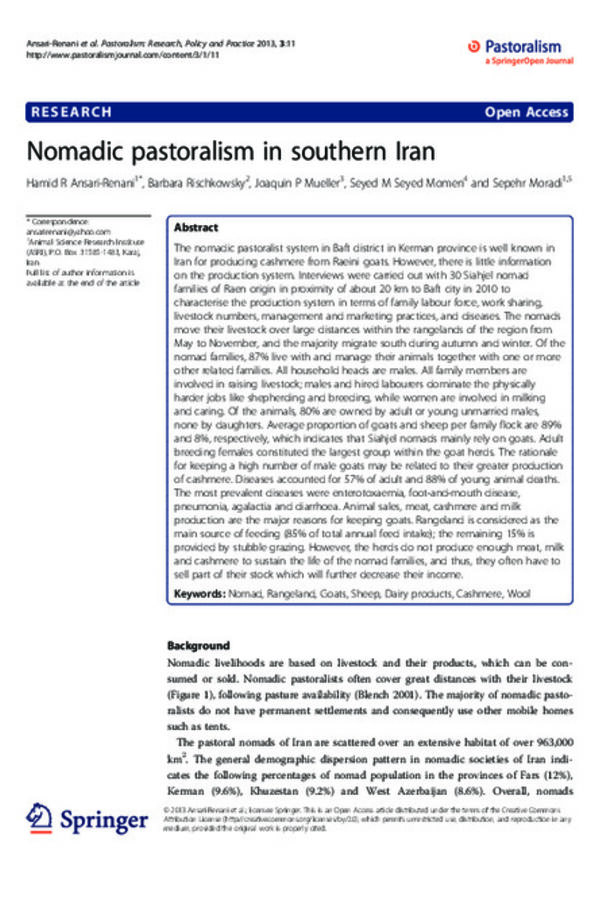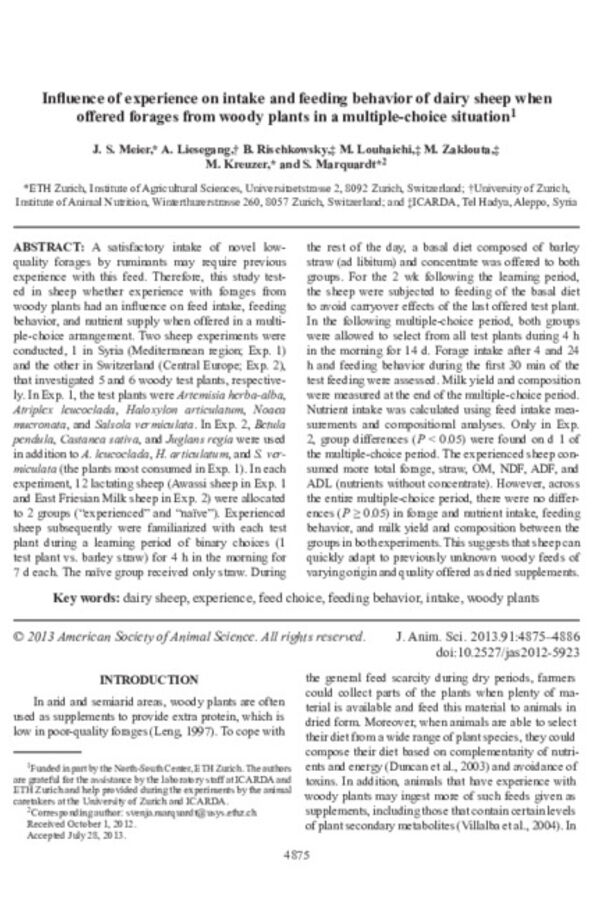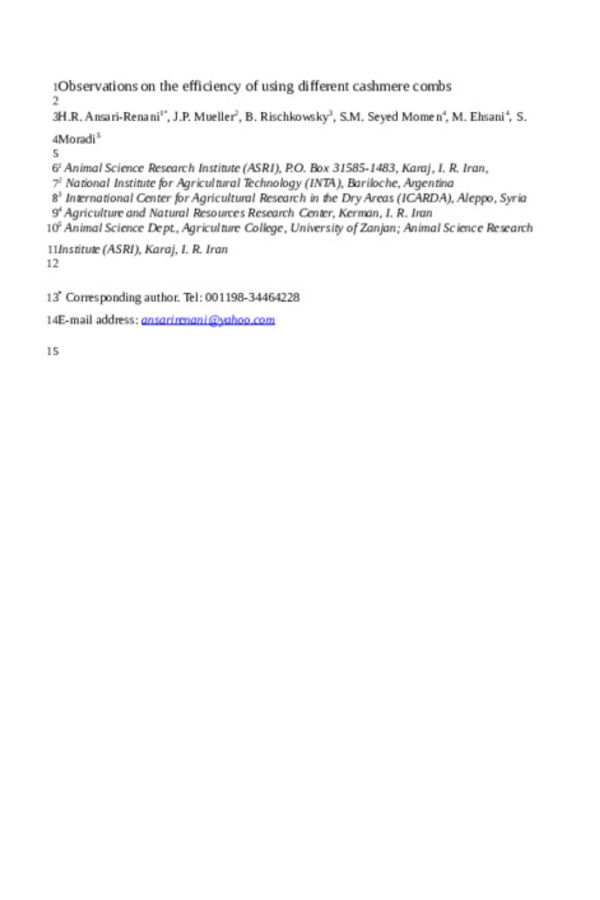- Home
- About Us
- Our Research Experts
- Barbara Ann Rischkowsky
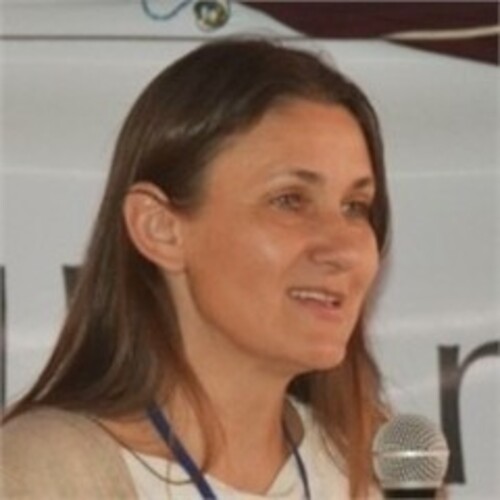
Barbara Ann Rischkowsky
Dr. Barbara Rischkowsky is program director of ICARDA’s Resilient Agricultural Livelihood Systems Research Program. She is a livestock scientist with experience in production systems analysis and the development of technological and institutional interventions for increasing livestock productivity in resource-poor ruminant production systems.
Her current research interests are: the sustainable development of sheep and goat production systems in drylands, including research on meat and fiber value chain development; genetic diversity and adaptive traits; breeding programs for smallholders; and feeding systems based on locally available resources. She is also working on the characterization and sustainable utilization of animal genetic diversity. Dr. Rischkowsky is an expert in the acquisition and management of multidisciplinary projects in Africa, Asia, and Latin America.
Since 2006, Dr. Rischkowsky has led the small ruminant research group at ICARDA. She has developed management strategies for small ruminant production systems in non-tropical drylands with a special focus on adaptation to climatic variability and market opportunities. Prior to this, she coordinated the production of the first ‘State of the World’s Animal Genetic Resources’ for the UN’s Food and Agricultural Organization (FAO). Previously, as assistant professor at the Georg-August University, Goettingen, and the Justus-Liebig University, Giessen, she focused on the analysis of livestock production systems in the tropics and subtropics.
Dr. Rischkowsky has authored more than 58 peer-reviewed journal publications, and 102 other publications, including books, book chapters, and extension guidelines. She is a member of the Iowa State University-led Global Forum on Food Security. She holds a Ph.D. in agricultural sciences from Justus-Liebig University in Giessen, Germany.
Barbara Ann Rischkowsky's Publications

Estimates of genetic parameters and genetic trends for growth traits in Menz sheep under community-based breeding programs
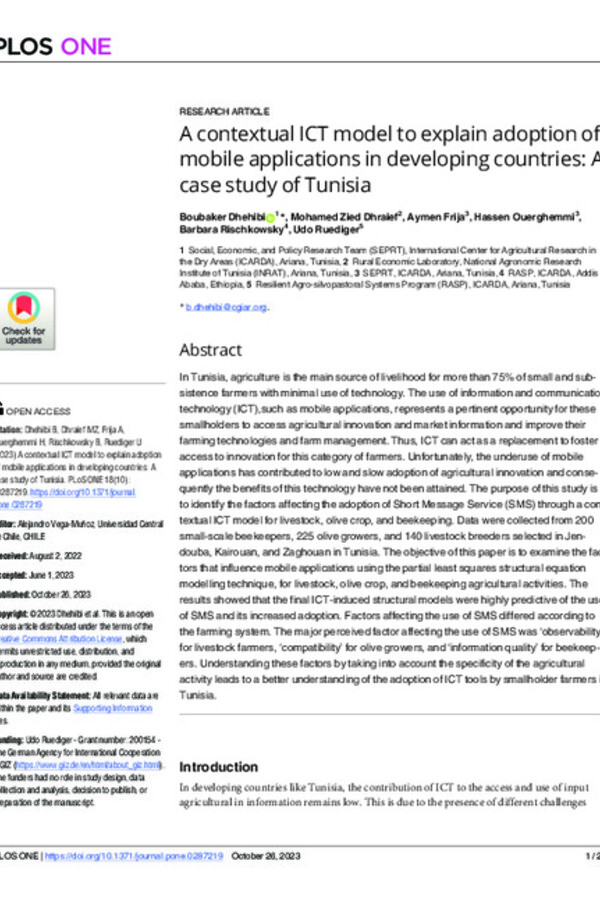
A contextual ICT model to explain adoption of mobile applications in developing countries: A case study of Tunisia
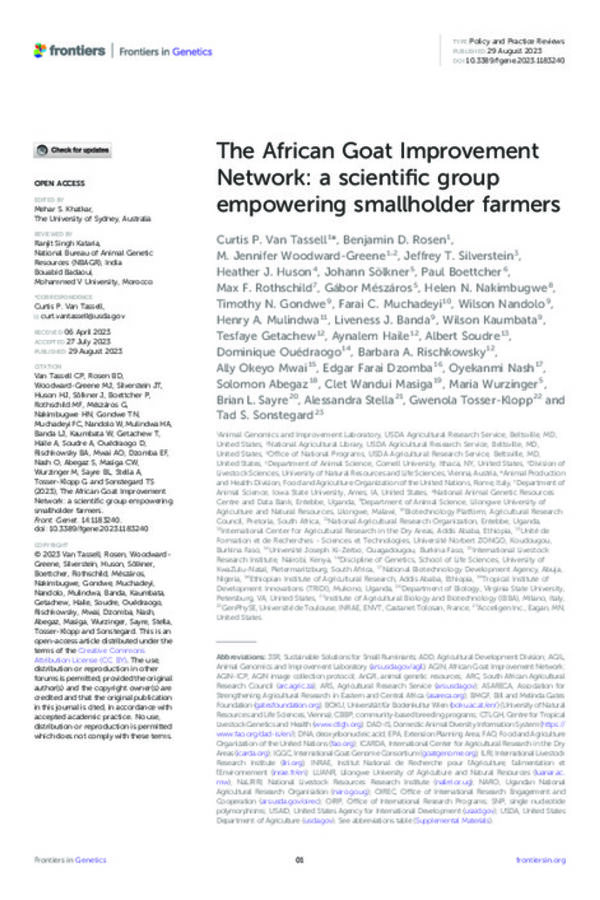
The African Goat Improvement Network: a scientific group empowering smallholder farmers

Understanding pastoralists’ preferences for goat traits: Application of all-levels and end-point choice experiments
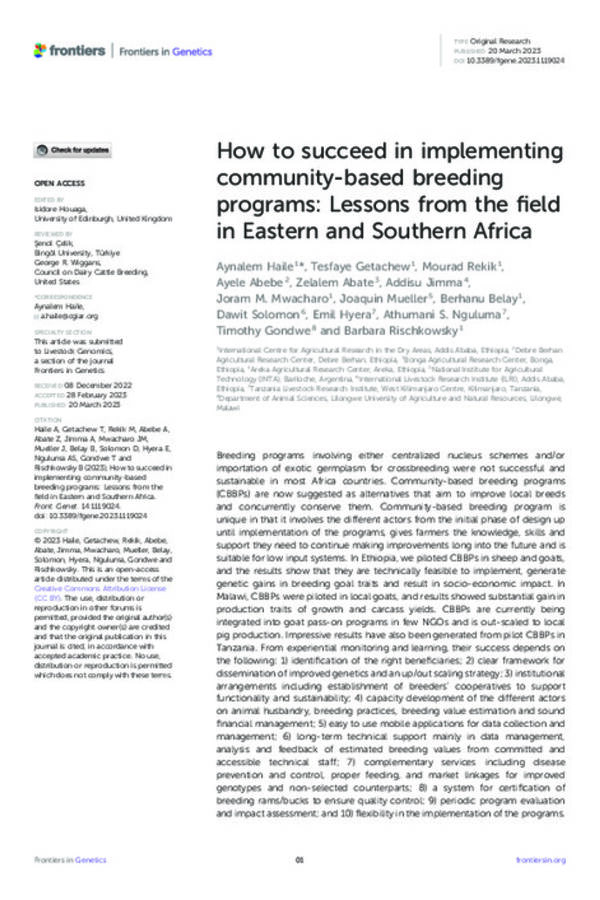
How to succeed in implementing community-based breeding programs: Lessons from the field in Eastern and Southern Africa
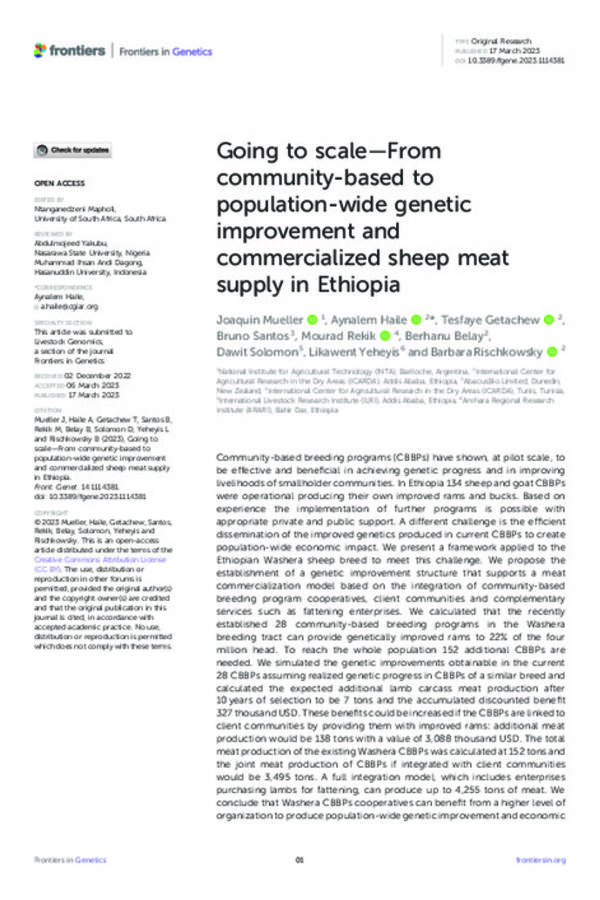
Going to scale—From community-based to population-wide genetic improvement and commercialized sheep meat supply in Ethiopia
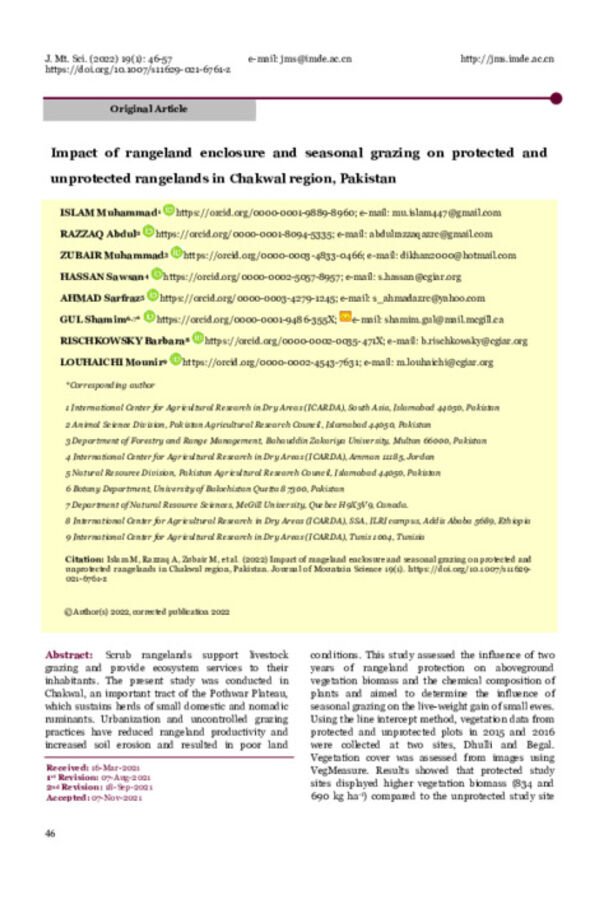
Impact of rangeland enclosure and seasonal grazing on protected and unprotected rangelands in Chakwal region, Pakistan
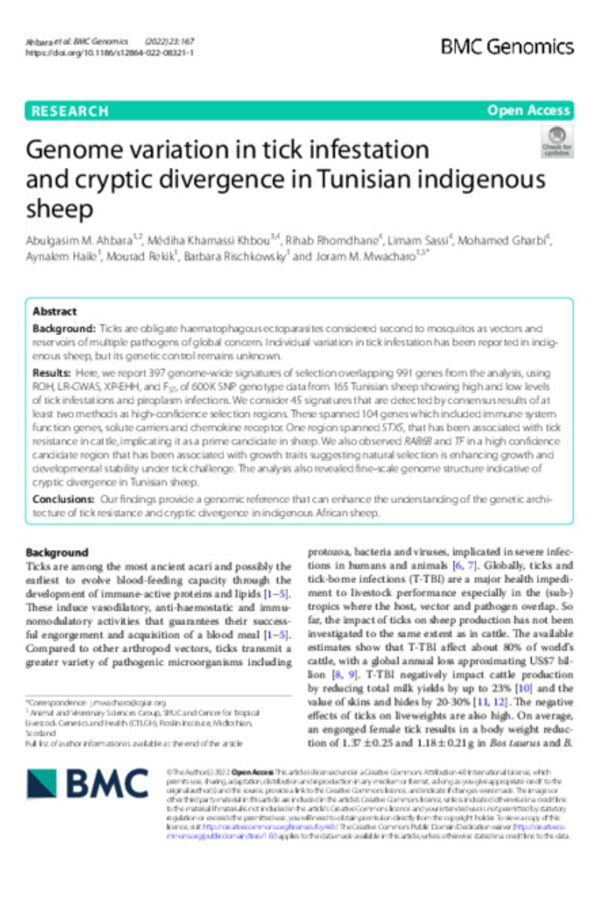
Genome variation in tick infestation and cryptic divergence in Tunisian indigenous sheep
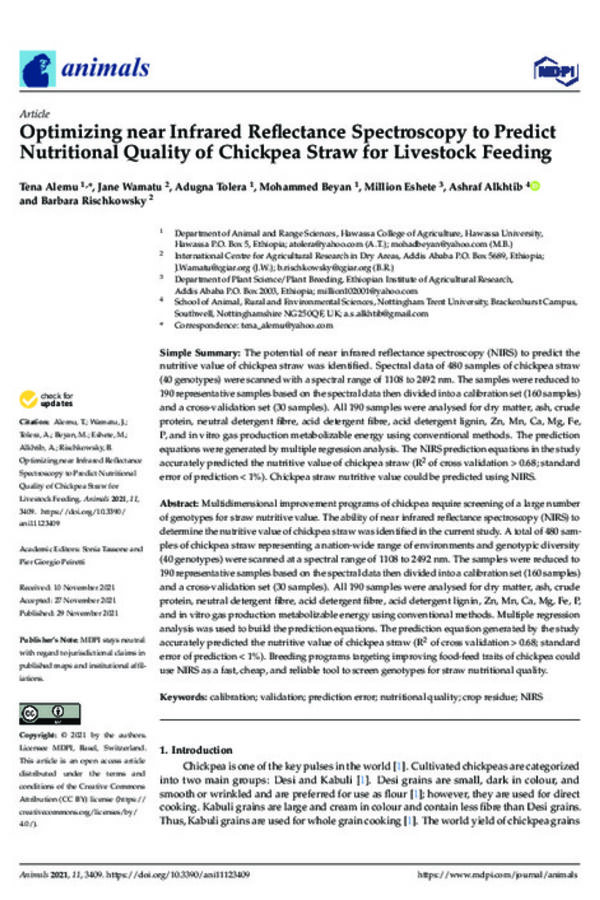
Optimizing near Infrared Reflectance Spectroscopy to Predict Nutritional Quality of Chickpea Straw for Livestock Feeding

Three easy fixes for sire use can enhance genetic progress in community-based breeding programmes
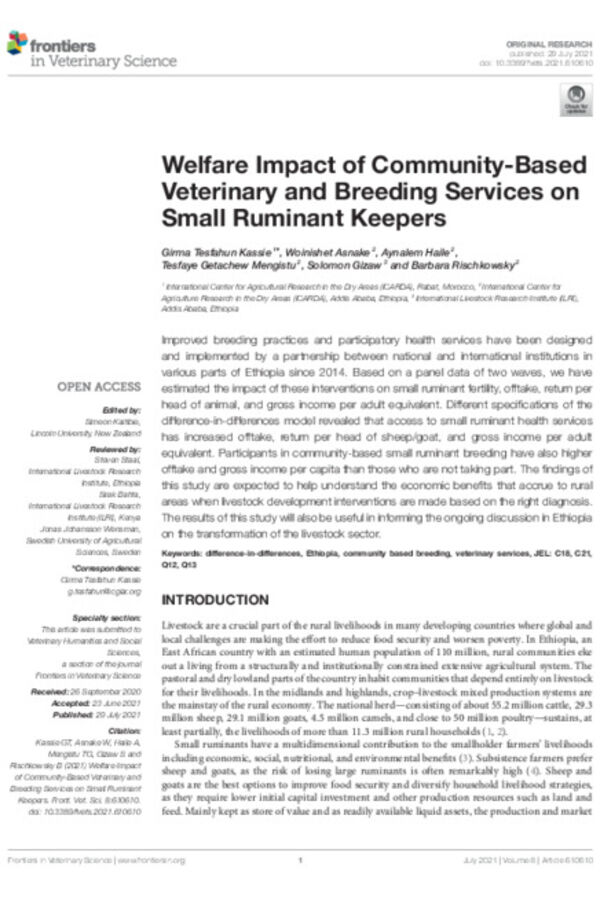
Welfare Impact of Community-Based Veterinary and Breeding Services on Small Ruminant Keepers

Genome-wide insights on gastrointestinal nematode resistance in autochthonous Tunisian sheep

Identification of smallholder farmers and pastoralists’ preferences for sheep breeding traits: choice model approach

Estimates of genetic parameters and trends for reproduction traits in Bonga sheep, Ethiopia
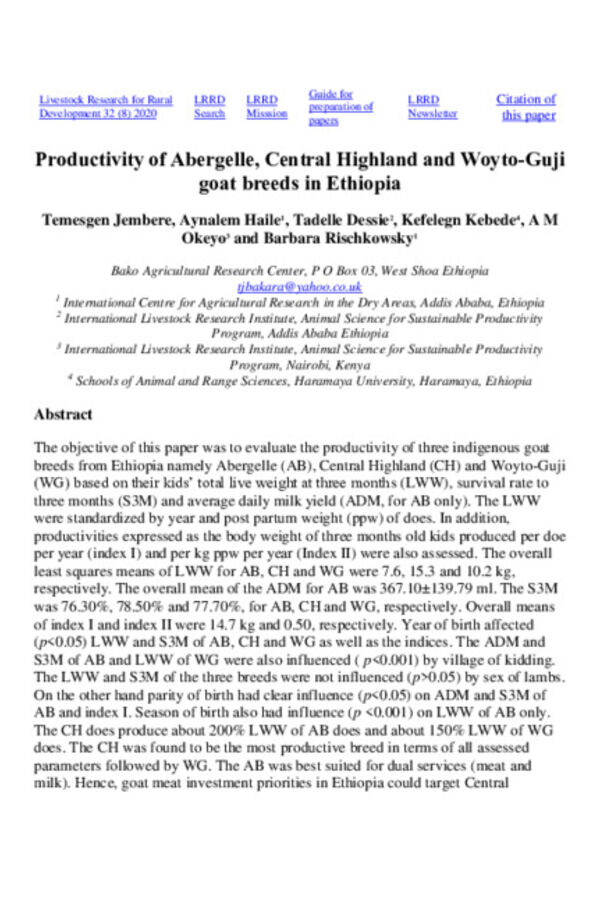
Productivity of Abergelle, Central Highland and Woyto-Guji goat breeds in Ethiopia
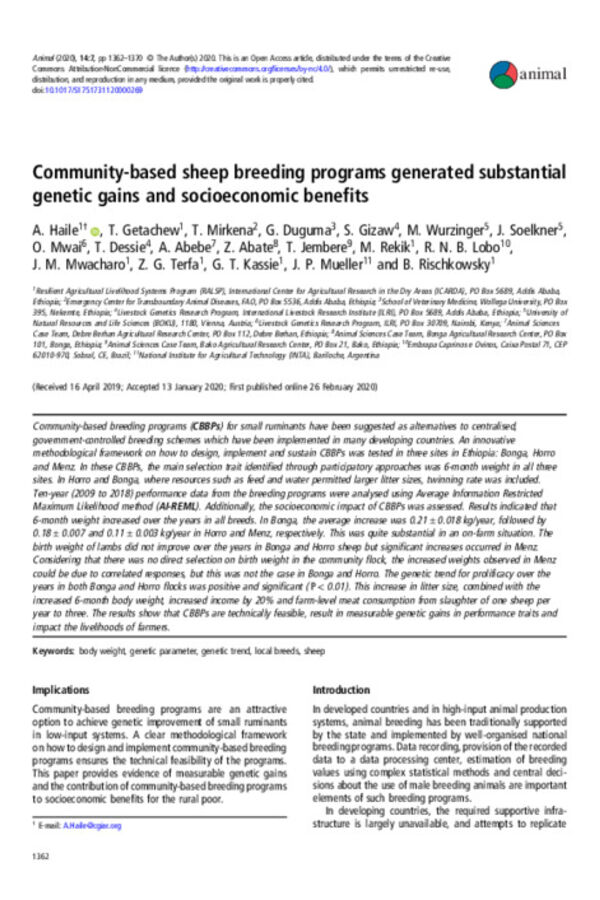
Community-based sheep breeding programs generated substantial genetic gains and socioeconomic benefits
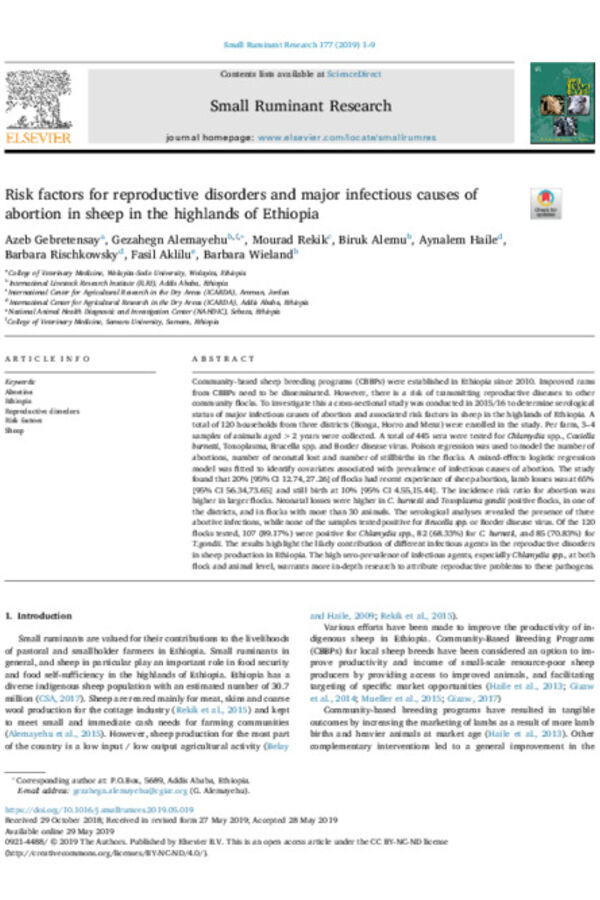
Risk Factors for Reproductive Disorders and Major Infectious Causes of Abortion in Sheep in the Highlands of Ethiopia

Genetic progress and economic benefit of community-based breeding programs for sheep out- and upscaling options in Ethiopia

Identification of strategies to improve goat marketing in the lowlands of Ethiopia: a hedonic price analysis
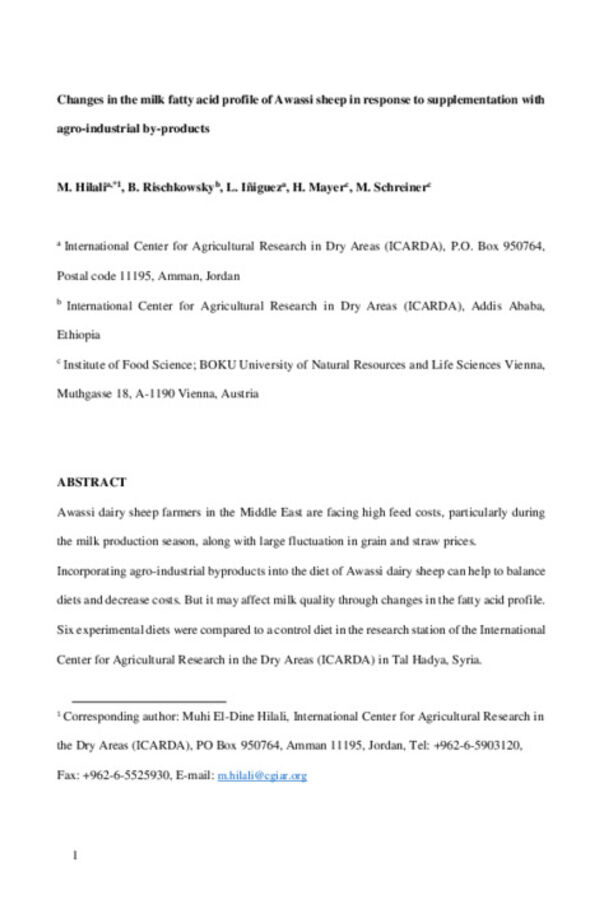
Changes in the milk fatty acid profile of Awassi sheep in response to supplementation with agro-industrial by-products

Impact of grazing on soil, vegetation and ewe production performances in a semi-arid rangeland

Investigations into nematode parasites of goats in pastoral and crop livestock systems of Ethiopia

Analysis of crop residue use in small holder mixed farms in Ethiopia
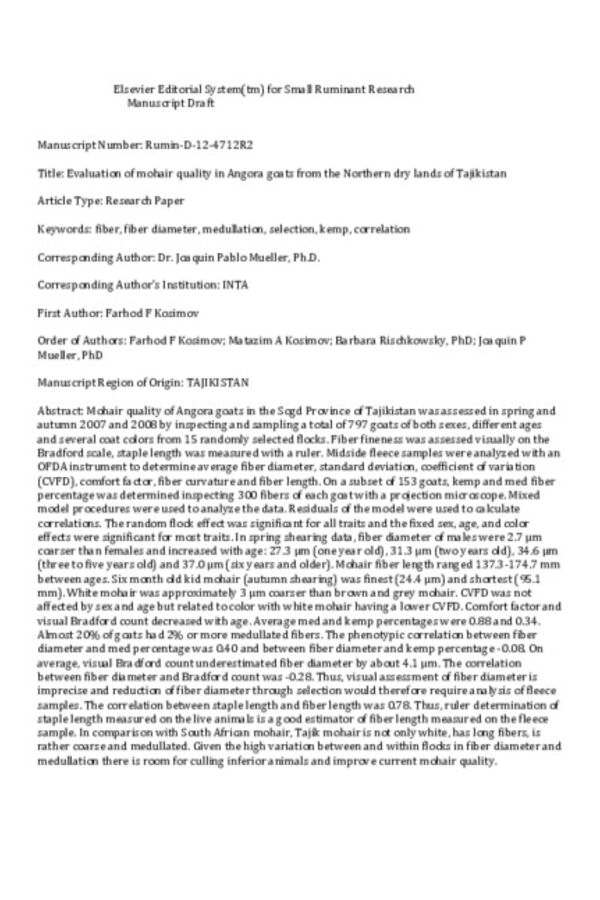
Evaluation of mohair quality in Angora goats from the Northern dry lands of Tajikistan

Evaluation of desho grass (Pennisetum pedicellatum) hay as a basal diet for growing local sheep in Ethiopia

GnRH and prostaglandin-based synchronization protocols as alternatives to progestogen-based treatments in sheep
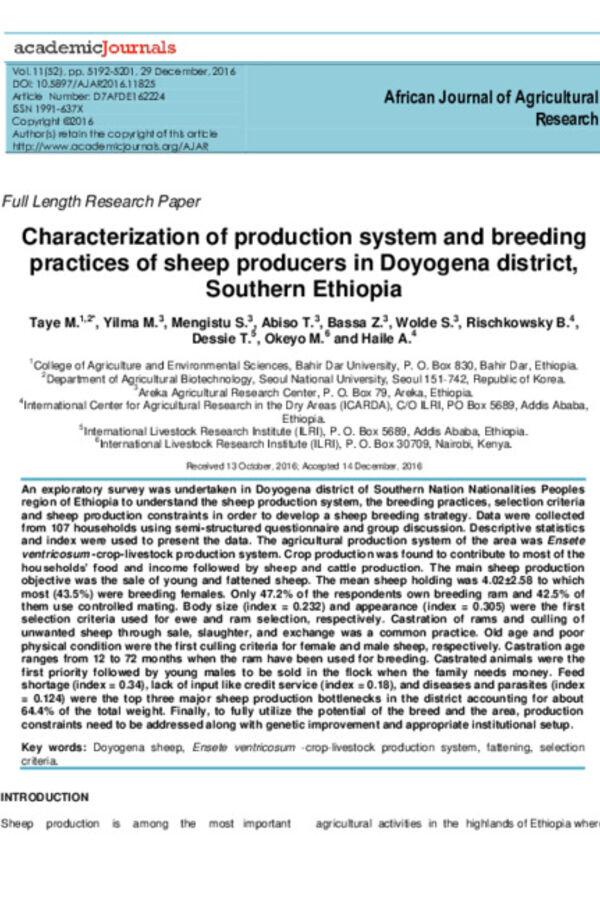
Characterization of production system and breeding practices of sheep producers in Doyogena district, Southern Ethiopia
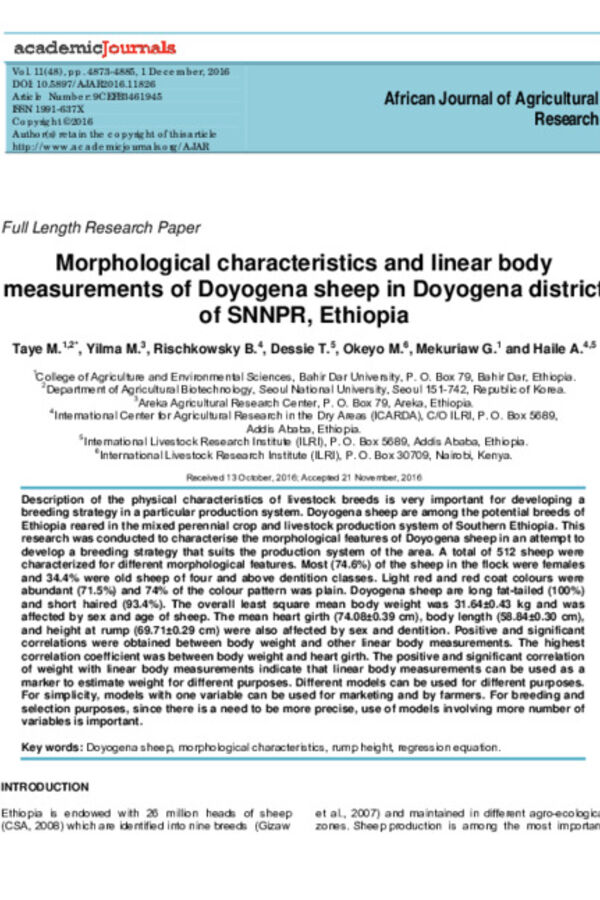
Morphological characteristics and linear body measurements of Doyogena sheep in Doyogena district of SNNPR, Ethiopia
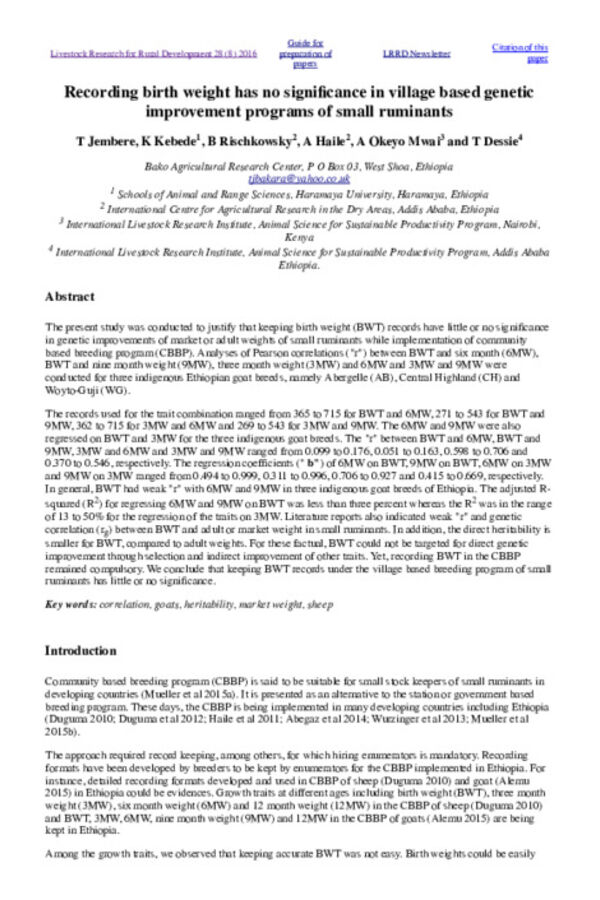
Recording birth weight has no significance in village based genetic improvement programs of small ruminants
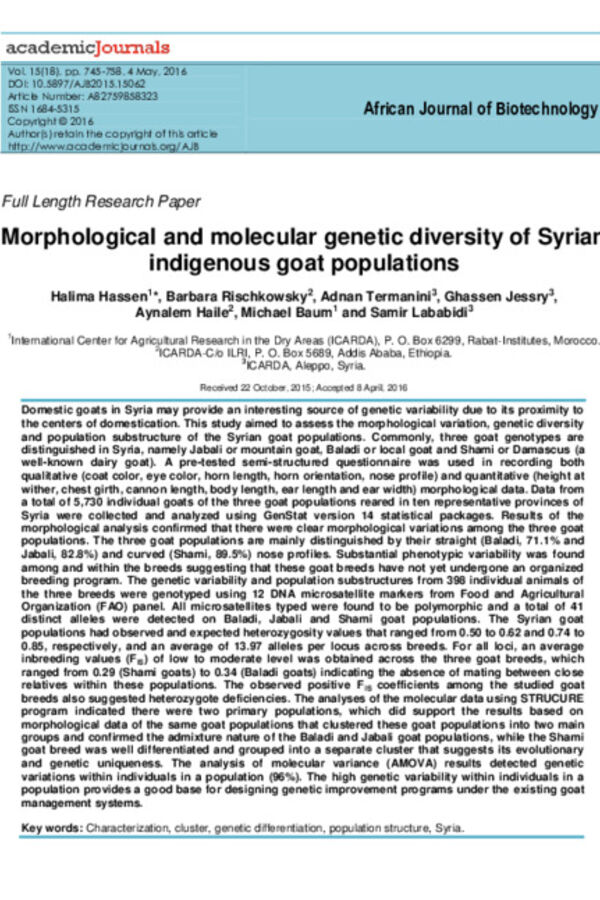
Morphological and molecular genetic diversity of Syrian indigenous goat populations
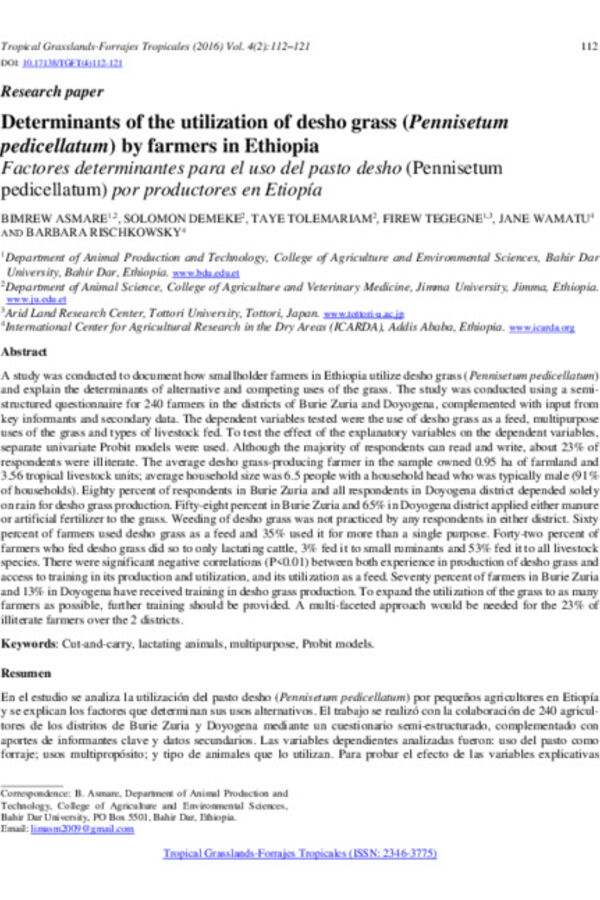
Determinants of the utilization of desho grass (Pennisetum pedicellatum) by farmers in Ethiopia
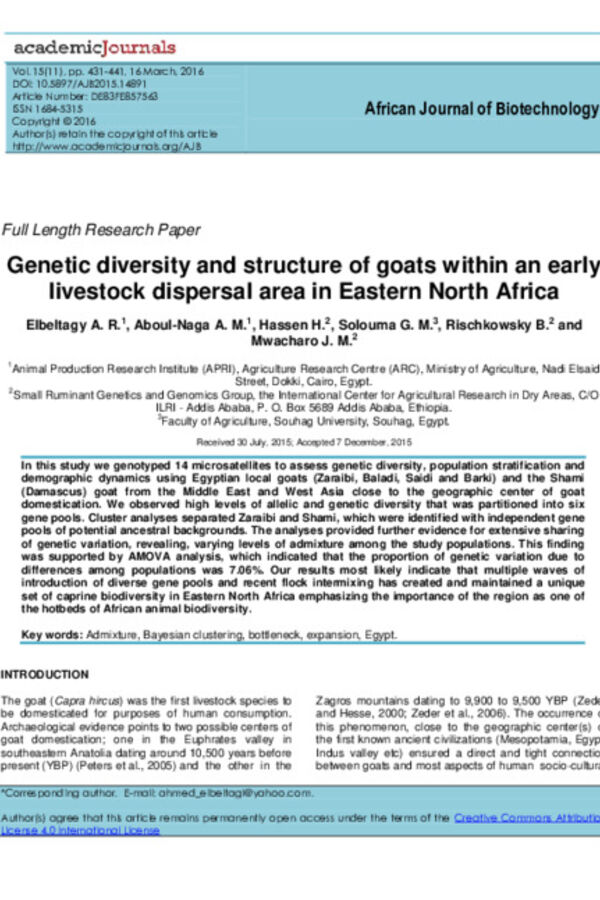
Genetic diversity and structure of goats within an early livestock dispersal area in Eastern North Africa
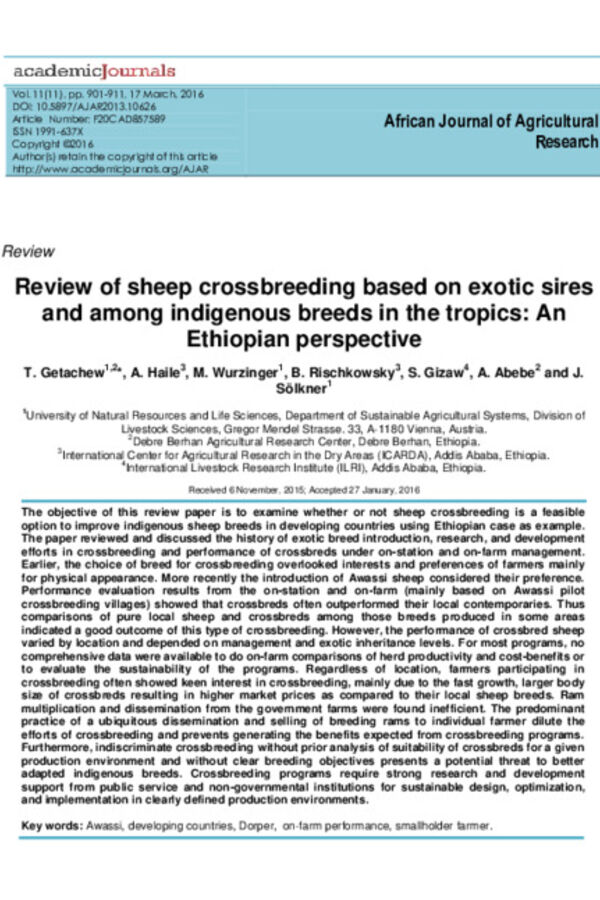
Review of sheep crossbreeding based on exotic sires and among indigenous breeds in the tropics: An Ethiopian perspective

Multiple genomic signatures of selection in goats and sheep indigenous to a hot arid environment

Do Texas Angora bucks improve mohair weight and quality traits of Tajik Angora goats?

Genetic diversity and structure in Egyptian indigenous sheep populations mirror patterns of anthropological interactions
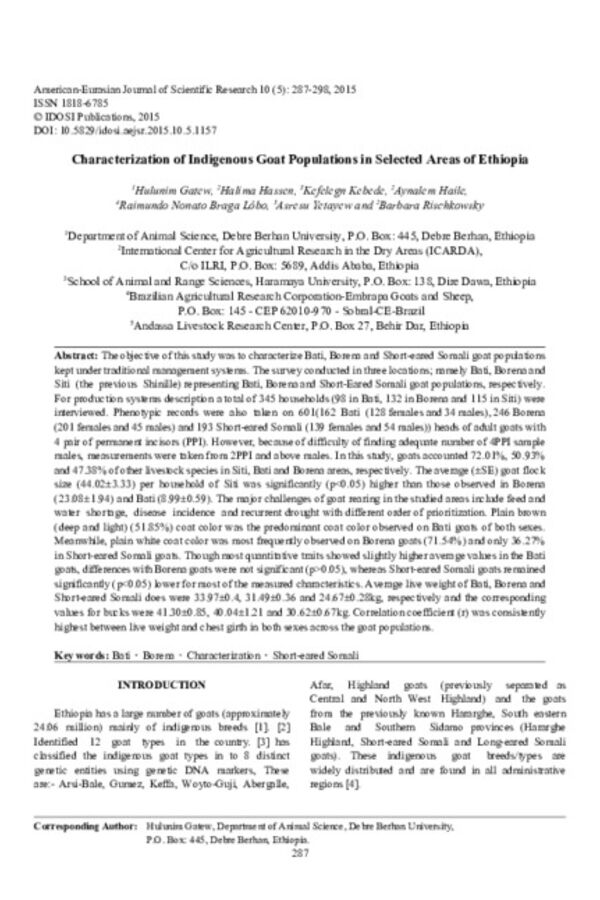
Characterization of Indigenous Goat Populations in Selected Areas of Ethiopia

Community‐based livestock breeding programmes: essentials and examples
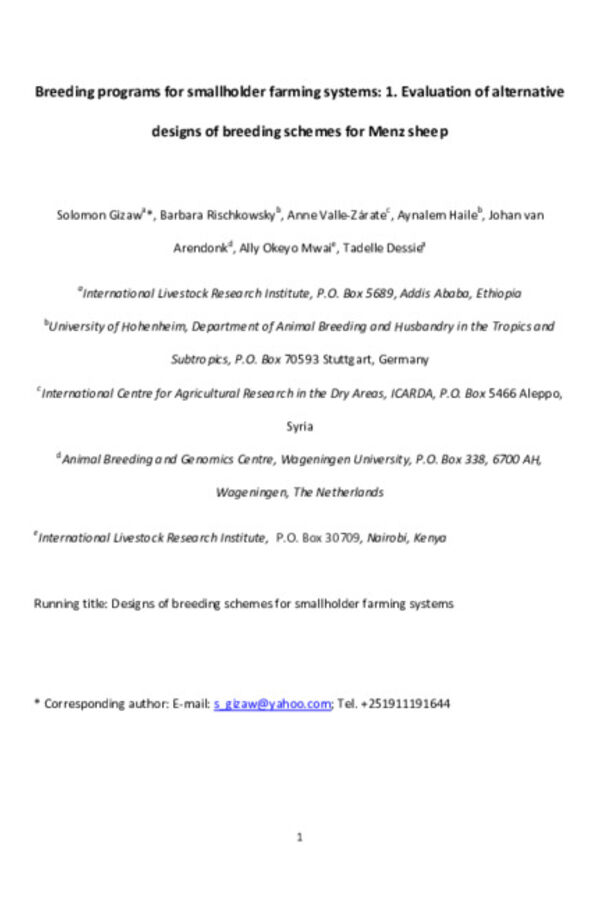
Breeding programs for smallholder sheep farming systems: I. Evaluation of alternative designs of breeding schemes
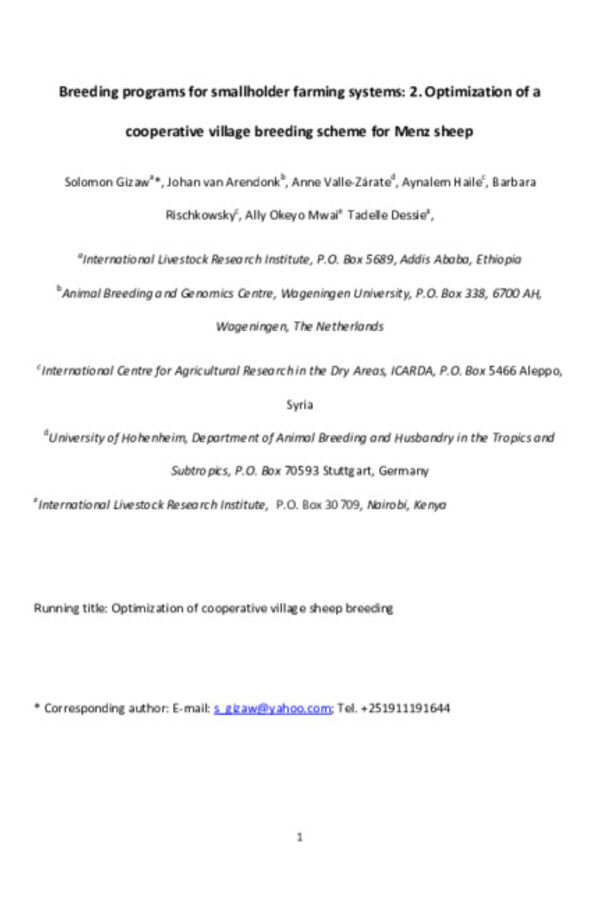
Breeding programmes for smallholder sheep farming systems: II. Optimization of cooperative village breeding schemes

Scaling up successful practices for pro-poor development projects involving goats: First outputs of a comparative study
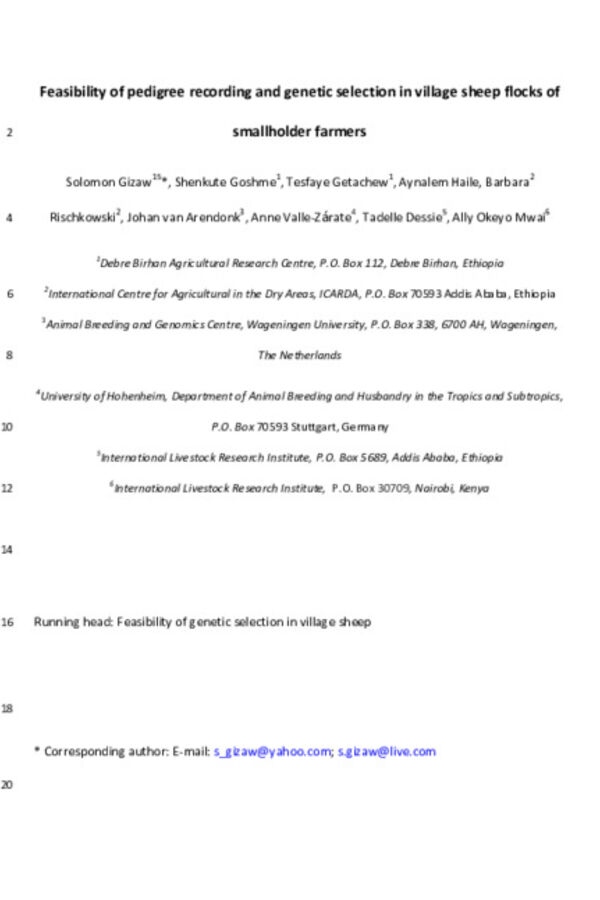
Feasibility of pedigree recording and genetic selection in village sheep flocks of smallholder farmers
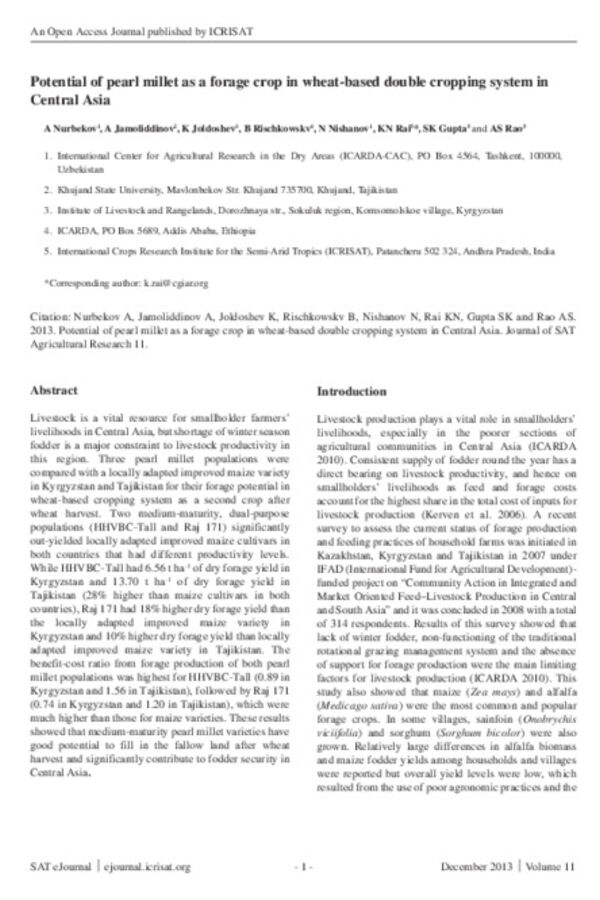
Potential of pearl millet as a forage crop in wheat-based double cropping system in Central Asia
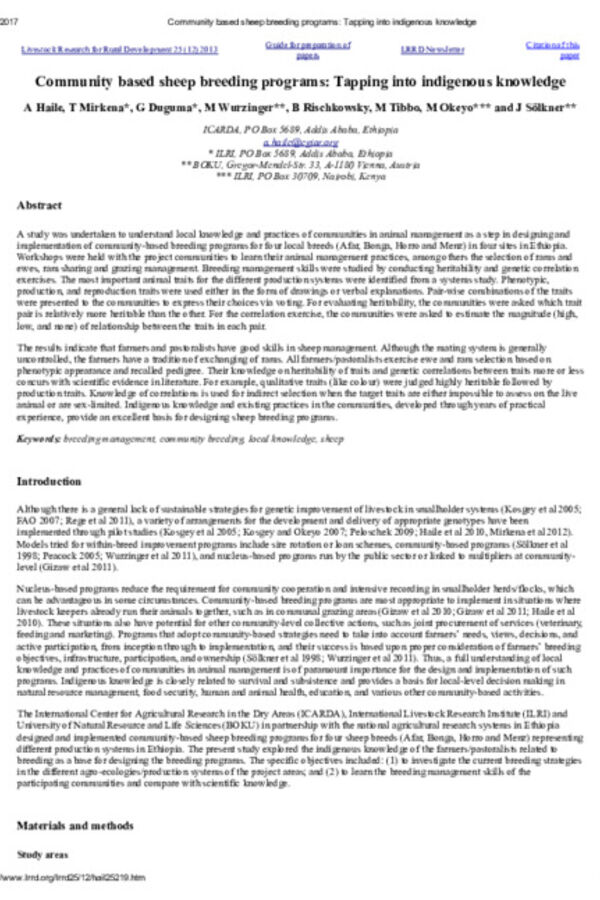
Community based sheep breeding programs: Tapping into indigenous knowledge
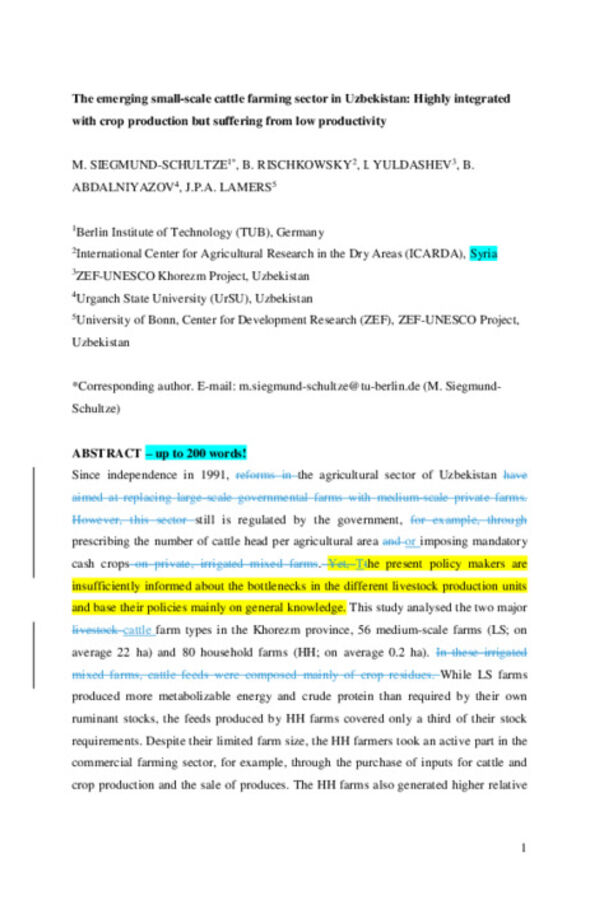
The emerging small-scale cattle farming sector in Uzbekistan: Highly integrated with crop production but suffering from low productivity
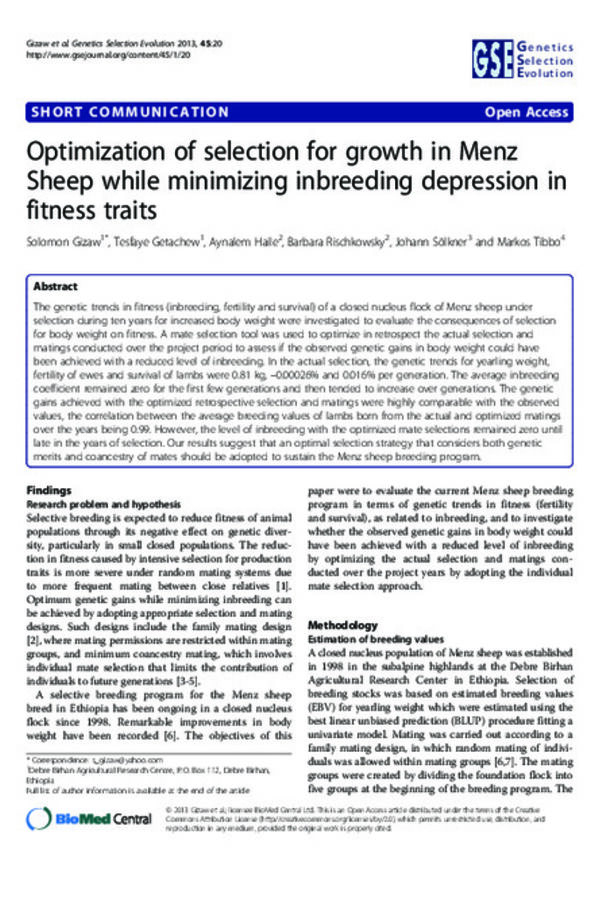
Optimization of selection for growth in Menz Sheep while minimizing inbreeding depression in fitness traits
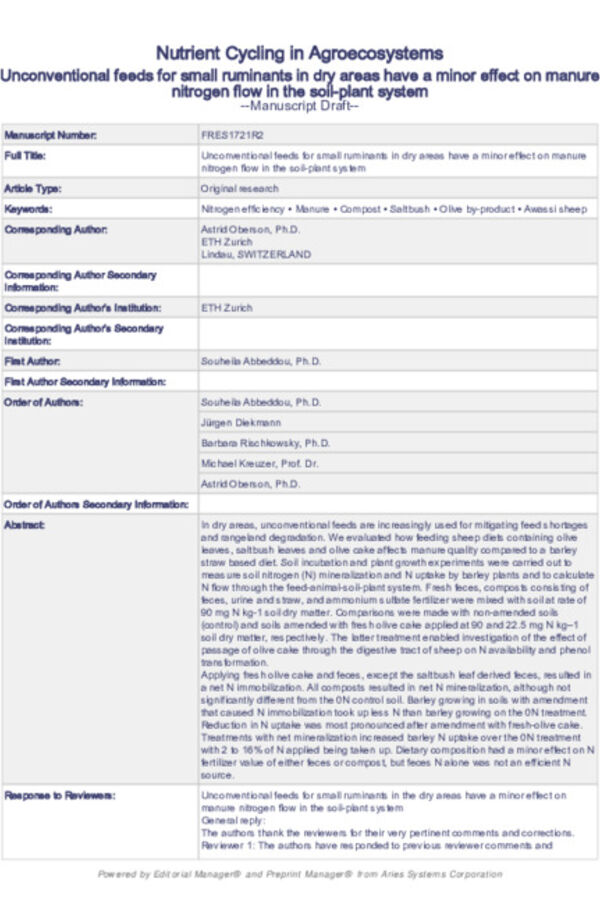
Unconventional feeds for small ruminants in dry areas have a minor effect on manure nitrogen flow in the soil–plant system

Molecular Characterization Of Ethiopian Indigenous Goat Populations

Cattle as Live Stock: A Concept for Understanding and Valuing the Asset Function of LiveStock
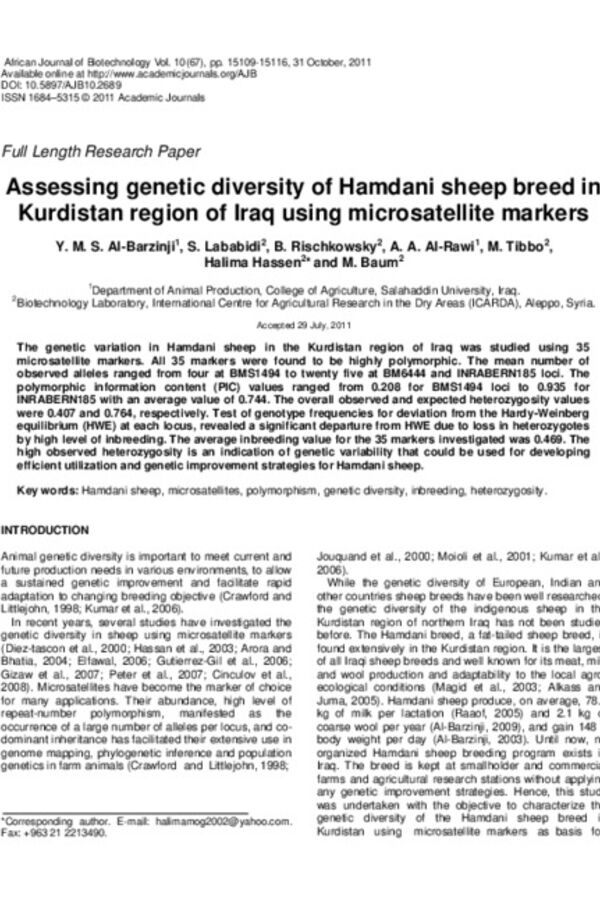
Assessing genetic diversity of Hamdani sheep breed in Kurdistan region of Iraq using microsatellite markers

Community-based alternative breeding plans for indigenous sheep breeds in four agro-ecological zones of Ethiopia

Modification of milk fatty acid composition by feeding forages and agro-industrial byproducts from dry areas to Awassi sheep


